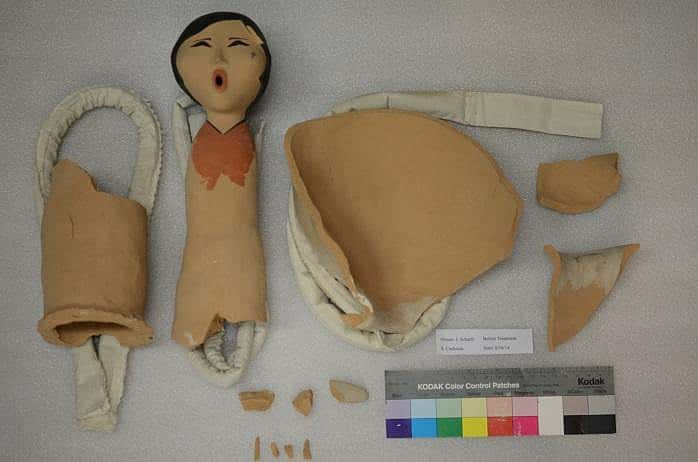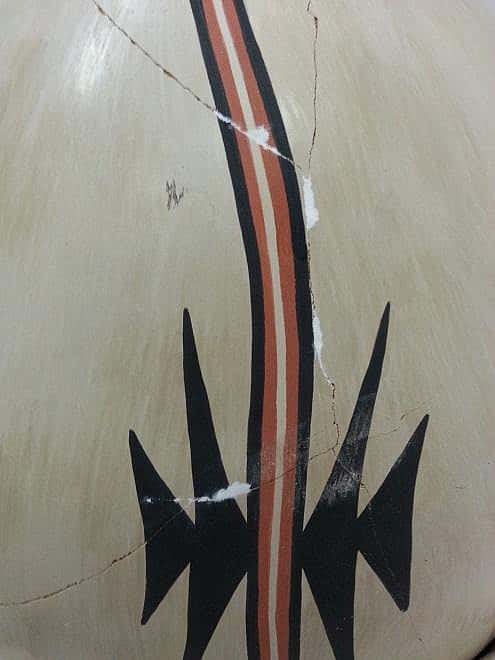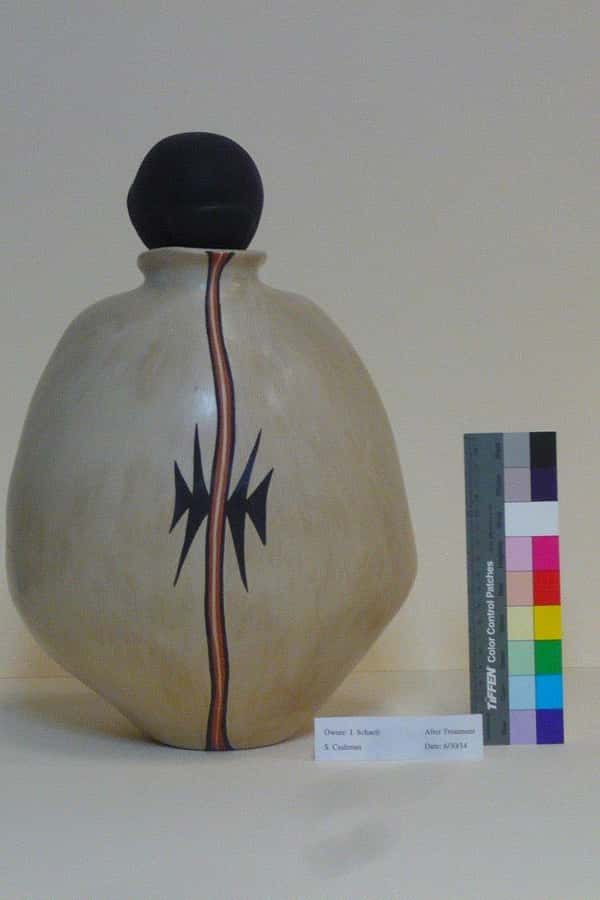
Putting Humpty Dumpty Back Together Again
We all know the old nursery rhyme.
Humpty Dumpty sat on a wall,
Humpty Dumpty had a great fall.
All the king’s horses and all the king’s men
Couldn’t put Humpty together again.
And just like Humpty Dumpty, one simple tap from the duster and she was, shattered and strewn upon the floor. It seemed as if she would suffer the same fate as Humpty Dumpty and could not be put back together again. Unlike this childhood fable, the Lone Star Earth Mother by Rose Pecos-Sun Rhodes of Jemez could indeed be put back together again, for she was made of stronger stuff than Humpty Dumpty: stoneware.
Today, the breaking of an object such as with the Lone Star Earth Mother does not signal the end of its life. There are trained individuals, called art conservators, who specialize in repairing, stabilizing, and cleaning art as well as historical objects. Here at the Buffalo Bill Center of the West, there is a phenomenal art conservation internship program that allows for those perusing a career in art conservation to learn the valuable skills required in this field. I was lucky enough to be one such intern this summer, and as such I was able to perform a conservation treatment on the Lone Star Earth Mother.
Before any treatment can begin, you must first determine what you are working with. To do this a condition report is created. This provides dimensions and physical descriptions, and catalogs any damages to the object as well as the type of treatment that will be performed. Then, images must be taken before the treatment is carried out. This ensures that later conservators will be able to visually determine what was done as well as show the exact state that the object was in before treatment. The images are then added to the report, which is then sent to the owner for approval. Once you have said approval, the real fun can begin.
In the case of the Lone Star Earth Mother, the first thing was to clean all of the fragments. You want to make sure that there is no dirt or grime on the exposed edges of the fragment. If dirt or grime is present, the fragments will not fit together as they should. Once clean, the fragments are then placed together. However, at this point no adhesive is used. This exercise is to determine the best way in which to put the Earth Mother back together. If I simply started adhering fragments together willy nilly, I could end up with one piece that would not fit in, and then I would have to remove the adhesive and start all over again.
During this process I discovered that the statue is comprised of two pieces, one with the neck and head of the Earth Mother and the other the clothes. I would have to repair the interior structure of the head and neck first; otherwise, it would never have fit into the cloth-like elements. There was a large crack on the base of the neck. This was most likely formed during the bisque process. In order to provide additional support, a patch was applied on the interior. Once the patch was secured, the head and neck pieces were adhered together and placed in the cloth-like exterior. Then, all the other fragments were reattached in the order that had been determined earlier.
One would think that at this point the treatment was complete. For all intents and purposes the sculpture is back together. This however, was not the end of the Lone Star Earth Mother’s stay in the conservation lab. Not all of her fragments had been recovered, and as such there were losses or holes. There were also losses along the fragment joints, therefore I filled losses and then painted over them to match the existing surface. This visually integrates the losses and the sculpture no longer appears damaged. All of the materials used are easily reversible so that if someone does not like what was done, or the repairs ever fail, they could be removed without damaging the object.
Once the treatment is completed more photographs are taken to show what was done to the object. Sometimes, the transformation from start to finish is truly astonishing. The conservator compiles a treatment report that includes the before and after photographs, a description of exactly what was done, and notes on the materials used. That report then accompanies the object for the remainder of its life so that future conservators will know exactly what was done.
Special thanks to J. Schaefer for allowing me to work on and write about the Lone Star Earth Mother.
Written By
Stephanie Cashman
Stephanie Cashman is a recent graduate of the University of Denver with a bachelors of fine arts. She is currently working towards applying to graduate school in art conservation.



